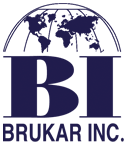The Benefits of Sand Casting
I have often wondered if purchasing and engineering resources in our customer base have considered that various requirements for sand cast parts can be realized simply by changing the type of sand or sand mold used.
Using sand molds has several benefits. Sand is inexpensive and can withstand high temperatures, thus allowing many metals with high melting temperatures to be cast using the sand casting process. Sand casting also accommodates a large size range of parts. The Sand, (typically silica sand), used to create the molds, is mixed with a “binder” to help maintain the shape of the mold cavity during the casting process.
Sand molds are prepared in different ways which can be categorized into 4 types:
- Greensand Mold – Greensand (sometimes called wet sand) molds use a mixture of sand, water, and a binder, usually called clay. Typically composition of the mixture is 90% sand, 3% water, and 7% clay (or organic bonding compounds), but the percentage of clay can vary slightly depending upon surface finish, moldability, and degassing requirements specific to each part. Greensand molds are the least expensive and as such, are the most commonly used sand molds.
- Skin-dried mold – A skin-dried mold starts out much the same as a greensand mold, but additional bonding materials are added and the internal surfaces of the mold are dried with a torch or a heating lamp which increases mold strength. Skin-dried molds yield improved dimensional accuracy and surface finish, but usually at the expense of collapsibility. Dry skin molds are more expensive and require more time, which equates to a lower production rate.
- Cold box mold – Cold box sand molds, or dry sand molds, use sand that is only mixed with an organic binder. The mold is then baked in an oven to impart strength which results in a mold that produces a part with high dimensional accuracy. The added preparation also adds cost thought, as the production rate is lower.
- No-bake mold – The no-bake mold is one of the most advanced molding techniques used for sand casting. Sand is mixed with a liquid resin and the mold sets relatively quickly at room temperature. This process has excellent dimensional stability and produces parts with superior surface finishes when compared to other sand casting techniques/processes.
The quality of the sand that is used also greatly affects the quality of the casting and is usually described by the following five measures:
- Strength – Ability of the sand to maintain its shape.
- Permeability – Ability to allow venting of trapped gasses through the sand. A higher permeability can reduce the porosity of the mold, but a lower permeability can result in a better surface finish.
- Thermal Stability – Ability to resist damage, such as cracking, from the heat of the molten metal
- Collapsibility – Ability of the sand to collapse, or more accurately compress, during solidification of the casting. If the sand cannot compress, then the casting will not be able to shrink freely in the mold and can result in cracking
- Reusability – Ability of the sand to be reused for future sand molds
All of these options play a part in the sand casting process, and adjusting or changing these options can yield different results that may better suit a customers’ requirements. An increase in the cost of the sand cast process may very well make economic sense if it can eliminate a subsequent machining or surface finishing process. Or conversely, using a less expensive process may still yield a part that is perfectly functional if the current process is holding dimensional or surface finish characters “tighter” than what is actually needed. Challenging the status quo and asking the right questions may very well result in a cost saving that’s been there all along.

